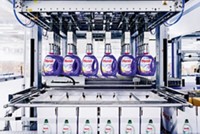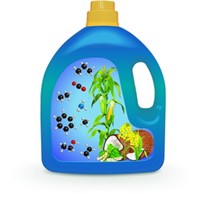Advertisement
Grab your lab coat. Let's get started
Welcome!
Welcome!
Create an account below to get 6 C&EN articles per month, receive newsletters and more - all free.
It seems this is your first time logging in online. Please enter the following information to continue.
As an ACS member you automatically get access to this site. All we need is few more details to create your reading experience.
Not you? Sign in with a different account.
Not you? Sign in with a different account.
ERROR 1
ERROR 1
ERROR 2
ERROR 2
ERROR 2
ERROR 2
ERROR 2
Password and Confirm password must match.
If you have an ACS member number, please enter it here so we can link this account to your membership. (optional)
ERROR 2
ACS values your privacy. By submitting your information, you are gaining access to C&EN and subscribing to our weekly newsletter. We use the information you provide to make your reading experience better, and we will never sell your data to third party members.
Business
Below the Surface
by Michael McCoy
January 26, 2004
| A version of this story appeared in
Volume 82, Issue 4

COVER STORY
BELOW THE SURFACE
Clariant, Huntsman, Rhodia, Stepan, and ICI are all chemical companies that have had well-publicized cash-flow problems in the past year. All of them are also surfactant producers.
While the financial woes of these companies are by no means due solely to their surfactant operations, industry players say their problems are emblematic. Price pressure emanating from big retailers is compounding with a sluggish economy and high feedstock costs to turn surfactants into an increasingly profitless business.
Executives tell a similar sad tale regardless of whether they produce commodity surfactants or relatively specialized ones.
The product suffering the most is likely the surfactant precursor linear alkylbenzene (LAB). Mark Quintyn, commercial director for LAB producer Petresa, characterizes 2003 as one of the worst years ever for the product. High prices for kerosene and benzene raised production costs, he says, but competition from alternative surfactants such as detergent alcohols kept the LAB industry from levying price increases. LAB consumption growth was less than 1% last year, he adds.
Mark Manion, global sales and marketing manager for Sasol's LAB business, concurs, noting that feedstock prices for the year were up 25% on average while prices actually slipped, thanks also to rising competition from the Asia-Pacific region. "We're in an unsustainable situation," he says.
The picture is a little brighter in detergent alcohols. David G. Naugle, vice president of Shell Chemicals' higher olefins and derivatives business, confirms that alcohols wrested some market share away from LAB; as a result, he says, 2003 volume growth for Shell was more than 5%. "But profitability-wise," he adds, "the year was disappointing."
On the specialty end of the surfactants spectrum, Francis X. Sherman, general manager of Akzo Nobel's surface chemistry unit, says his business is making money, unlike some in the industry, but not enough to justify reinvesting profits in new facilities. Even though Akzo's key raw material is tallow rather than oil or gas, the company got its own feedstock shock last year when the tallow market spiked after mad cow disease was discovered in Canada.
Akzo Nobel's surfactant sales were down in 2003, Sherman says, as consumer product makers cut costs by reducing active ingredient content or by formulating away from Akzo's effective, but relatively expensive, cationic surfactants. The firm's key industrial markets didn't fare much better, he says: Demand fell for surfactants used to apply agrochemicals, and the asphalt business, which uses cationics as emulsifiers, struggled in the face of municipal budget cuts.
Tony Latella, business director for consumer specialties at BASF's performance chemicals unit, says his company's sales to the soap and detergent sector were up slightly in 2003. BASF is a major producer of specialized nonionic surfactants, and he says the gains were due largely to the commercialization of new products that emanated from BASF labs. However, the weak economy dampened sales, and BASF's profits were crimped by raw material and energy cost increases, Latella adds.
IF THE ECONOMY and raw materials were the surfactant industry's only problems, producers might see a light at the end of the tunnel given that the economy, at least, seems to be improving. But Sherman points out that price pressure from giant retailers such as Wal-Mart that sell their own private-label laundry detergents and cleaning products is a structural change that isn't likely to reverse.
He explains that name-brand soap and detergent producers are loath to lose market share to these store brands. Consequently, producers are hunkering down and wary of any surfactant innovation that might cause their costs to rise. "In the past, you had big soapers who wanted to develop new products with new features, but you are not seeing that as much today," Sherman says.
Joel H. Houston, president of the consulting firm Colin A. Houston & Associates, agrees that Wal-Mart, Costco, and other discount and club stores continue to shape U.S. consumer spending habits, particularly in the heavy-duty laundry detergent category. Significantly, no longer does every major American retailer carry the full range of premium and midtier brands from all suppliers.
"Limited brand configuration is accepted at many outlets," Houston says. "That's a big change." The downside for surfactant suppliers and consumer product makers alike is that retailers seeking to keep prices low are prone to see high-priced brands as expendable. "It raises the question of the role of the premium detergent today and how much market there is for competitors," he adds.
Unable to raise prices significantly and stymied at innovation efforts, surfactant producers have spent the past two years trying to shape their own destinies through acquisitions, divestments, and internal revamping.
Among commodity surfactant suppliers, Petresa's Quintyn maintains that his firm's operations are lean and were not in need of restructuring last year. A new initiative for Petresa, whose last big move was acquiring the Brazilian LAB producer Deten in 1999, is a partnership with the Slovakian firm Petrochema, through which it is now offering LAB derivatives in Central Europe.
Sasol, one of Petresa's chief competitors in LAB, did take restructuring steps following a big loss in its LAB business in the fiscal year ending in June 2003. Sasol idled a plant in Italy and cut staff 30% at its Baltimore, Md., facility, moves that Manion says were made possible by improving technology in Baltimore and optimizing production at Sasol's other LAB sites through the installation last year of UOP's Pacol LAB production technology.
Sasol is also trying to sell a Dutch-based facility that makes, among other products, specialty surfactants. However, Arno Stegk, vice president for surfactants, says the planned sale by no means signals an intent to exit the specialties business. "You cannot live only on commodity surfactants," he says.
Sasol was the source of the detergent alcohol industry's last big capacity addition, a 120,000-metric-ton-per-year plant in Secunda, South Africa, that opened in mid-2002. Shell added 150,000 metric tons of alcohol capacity in Geismar, La., in 2002, but then idled 100,000 metric tons at the site later that year. BP closed a smaller U.S. plant in 2002, and Huntsman closed a U.K. facility last year. Between the openings and closings, Shell estimates that the world detergent alcohol industry netted a modest 60,000 metric tons of capacity over the past two years.
INDEED, Tom O'Brien, Sasol's vice president for alcohols, says the business has turned around from the depths of 2002 when his company and Shell opened new plants within months of each other. Although profit margins are still slim, Sasol is happy with the cost competitiveness of its new coal-based plant in Secunda, and O'Brien says it is moving toward construction of a twin facility by 2006.

In specialties, BASF agreed in July to sell its Gurnee, Ill., surfactants plant to privately owned Petroferm. Latella notes that BASF established a toll manufacturing arrangement under which it will continue receiving ester, alkoxylate, and silicone surfactants from Petroferm, allowing both parties to benefit from economies of scale. At the same time, he adds, BASF is investing in its business, modernizing its Geismar, La., surfactants facility to improve efficiency in high-volume nonionics production.
Akzo Nobel's surface chemistry unit has been one of the more active restructurers: In 2002, it acquired Crompton's industrial surfactants business for $92 million, and last year, it embarked on an internal restructuring--the latest of several in recent years--that eliminated about 250 jobs across North America, Europe, and Asia.
No plants were closed, Sherman says, and the company continues to serve all major market segments, although it has segmented customers and differentiated service levels to give priority to strategic customers. On the expansion front, Akzo started up a $23 million cationic surfactants plant in Singapore in October, and it has expanded capacity at its oleochemicals joint venture in Malaysia.
Although the days may be past when customers would readily adopt the latest and greatest surfactant, producers haven't given up on new products. Sherman, for example, says Akzo has developed surfactants for hard-surface cleaners that must comply with volatile organic compound regulations. The company's cationics make themselves effective by providing the hydrotropic activity formerly contributed by VOC solvents.
BASF's new product effort also has an environmental angle. Latella says the company is responding to the trend to colder laundry temperatures by developing new nonionic surfactants with better cold-water solubility and cleaning. Likewise, in automatic dishwashing detergents, the company has technical projects to address the need to cut water use and lower wash temperatures. And in the industrial and institutional market, Latella adds, the firm is helping customers meet "green seal" criteria with new surfactants that clean faster, such as its Pluronic N3, which is under Food & Drug Administration review for dishwashing applications.
At Shell, Naugle says the company is benefiting from a new openness by personal care customers to synthetic surfactants. The firm's Neodol 67, a highly soluble alcohol developed with Procter & Gamble for use in rapid-dissolving powdered laundry detergents, is of particular interest to the personal care industry, he notes, thanks to features such as good foaming in hard water.
Surfactant producers are gently pushing innovations such as these to wary customers in the consumer products industry. Although conditions are still grim--Sasol's O'Brien says 2004 is off to a difficult start--producers are looking for a warmer reception as the economic tide continues to turn. As Sherman at Akzo Nobel says, "We hope that the recovery will start to swing our customers' focus back to innovation from cost reduction."






Join the conversation
Contact the reporter
Submit a Letter to the Editor for publication
Engage with us on Twitter